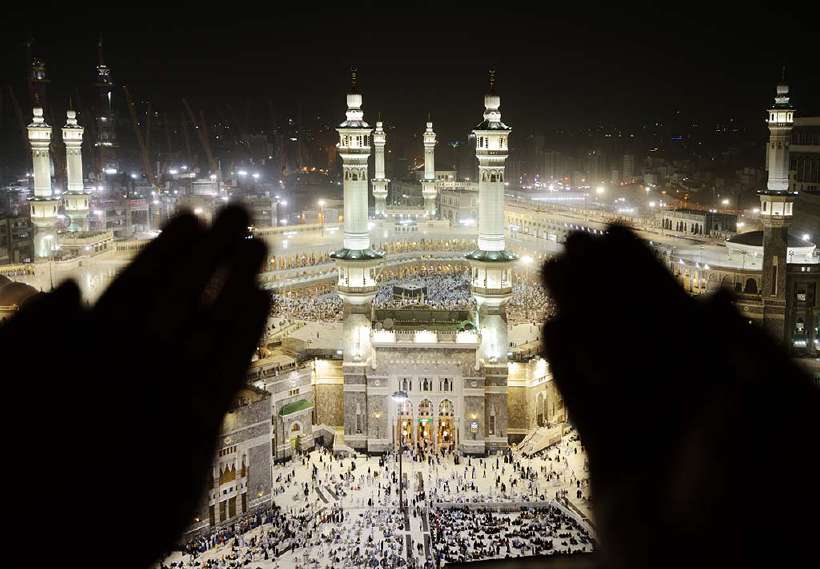Ramadan: The Month of 30 Fasts
Home / Non Fiction for Kids / Festivals for Kids / Ramadan: The Month of 30 Fasts
Ramadan (or Ramzan) is a very special month for Muslims, people of the Islamic faith. Muslims are people who follow the Islamic religion propagated by the Prophet Mohammed in the seventh century. Muslims believe that it was in this month that Allah revealed the holy book of the Muslims, the Koran (or Quran) to the prophet Mohammed.
The Quran says that the fast of Ramdan is important as it tests devotion and faith. So believers fast from sunrise to sunset every day during the entire month of Ramdan. The roza (fast) is one of the strictest on earth and that means, no breakfast, no mid morning snack, no lunch and no water!
![The Month of 30 Fasts [Illustrations by Shinod AP and Anup Singh]](/media/features-145_1_hu0fc3e67dfdd185fc638b66d5b2f00f90_16703_820x0_resize_q60_box.gif)
Many people set aside two-and-a-half percent of his/her income to give to the needy during this season. Other Muslim families give away at least 3.5 kg of food per family, as fitra (alms) to the poor.
During the month of Ramdan, the day in a Muslim household begins early. Everyone is up and about by five in the morning, well in time for the sehri (the meal that must be eaten before day break). The early morning meal is a simple affair and is supposed to end about 40 minutes before daybreak. It’s the only meal to be had before nightfall.
Mostly grown-ups and teenagers keep roza but children too can observe the fast. Not many children are able to observe rozas all the days of the month, but they do compete with each other to see who keeps the maximum number of fasts!
The month-long fast ends with the sighting of the new moon when the actual celebrations of Eid ul-Fitr begin. Eid-ul-Fitr actually means the joy at the end of days of fasting.
During the evenings, the menfolk gather at a masjid for a reading of the Koran and as the sun sinks out of sight, the muezzin (priest)‘s call signals the end of the day long fast. The roza is broken by consuming a few dates and sharbat (sweet juice) and it is time for the evening prayers.
Once the prayers are over, Iftar (feast that breaks the fast) is next and the streets spring to life as vendors clamour to sell piping hot jalebis, sizzling kababs and skewered delicacies wreathed in steam and smoke.

Women clad in burkhas, and men dressed in white kurta pajamas and colourful caps, can be spotted jostling through the crowds as groups of noisy children trail behind. Thick gravies simmer and bubble in huge cauldrons with friendly cooks ladling out huge helpings of spicy korma for visitors wishing to gorge on Iftari fare.
The Iftar meal is invariably better than normal fare and is quite a treat after the day long fast, with the ladies of the house taking special care to prepare succulent dishes. The mosques are gaily lit and people visit each other – Iftar is a time for celebration and socialising.
At the sighting of the new moon of the month of Shawwal (the month that follows Ramdan, in the lunar calendar) the 29 or 30 rozas of Ramdan, come to an end. People wish each other, “Chand Mubarak” (‘Eid Mubarak!’ is wished only after the Eid namaaz the next morning). Eid is a celebration of will power – the ability of people to keep rozas throughout the month.
On the eve of Eid, milk is bought in large quantities for the traditional sheer korma (a pudding), and onions and potatoes are chopped and fresh chicken is bought for the biryani and chicken dishes. Eid is celebrated over two days. On the first day, the family stays at home and receives visitors while on the second day they go visiting friends and family.
632 words |
6 minutes
Readability:
Grade 7 (12-13 year old children)
Based on Flesch–Kincaid readability scores
Filed under: festivals
Tags: #muslims, #islamic, #iftar, #mohammed, #prophet
You may also be interested in these:
Olympic Swim Against the Tide
Vaikom Mohammed Basheer
First Pope To Set Foot in Mosque
A Penalty Kick into Disaster
Makar Sankranti